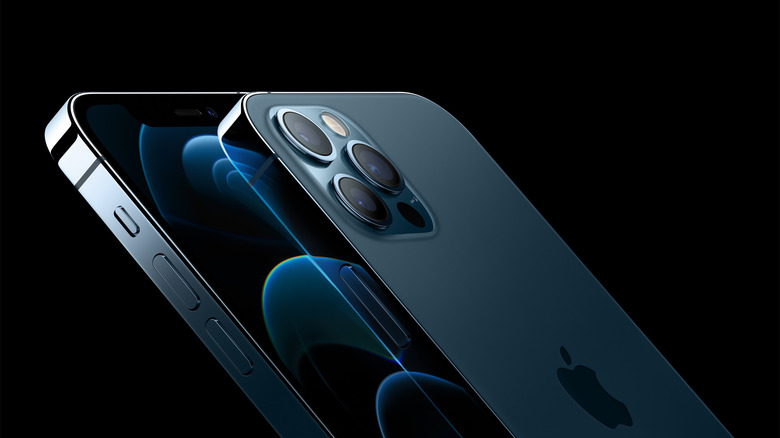All US iPhone 12 Models Have A Mysterious Groove On The Side - Here's What It Is
- All US iPhone 12 versions have a groove on the right side made of a different material than the metal frame.
- Apple confirmed the groove houses a 5G mmWave antenna that makes possible the faster 5G speeds that are available in some cities.
- All the international iPhone 12 versions lack the antenna groove, as those handsets will support only sub-6GHz 5G speeds, where available.
This year, Apple fans who have been keeping tabs on iPhone 12 leaks have hardly been surprised during yesterday's announcement. The design, specs, prices, and release date information that come out of Apple's launch event matched almost perfectly the recent claims from several prominent leakers. Even those design leaks that indicated the iPhone 12 will feature a mysterious grove on the right side turned out to be accurate. All four iPhone 12 phones do have a cutout in the metal frame that's filled with a different type of material. The groove is placed well-below the standby button, which forced Apple to move the SIM tray slot on the other side of the handset below the volume buttons. Some speculated that the groove might be some sort of Smart Connector-like port, but that's not the case. It turns out there's a perfectly valid explanation for the unusual design choice, and it's only the iPhone versions sold in the US that will be "affected" by the problem.
All the iPhone 12 versions sold in America will feature the same groove on the right side regardless of type or color.
Here's the iPhone 12 and iPhone 12 mini design for the US:

The US versions of iPhone 12 and iPhone 12 mini have a groove on the right side.
Here's the international design for the same handsets:

The international versions of iPhone 12 and iPhone 12 mini do not have a groove on the right side.
The iPhone 12 Pro and iPhone 12 Pro Max have the same cutouts in the US:

iPhone 12 Pro and new iPhone 12 accessories. The phone features a 5G antenna groove on the side.
The international versions do look much better without that groove, which ruins the perfectly flat and smooth metal design:

iPhone 12 Pro and new iPhone 12 accessories. The phone doesn't feature a 5G antenna groove on the side.
The groove's purpose is to enable the speedier type of 5G connectivity that's not widely available. The Verge confirms that the groove houses the mmWave antenna.
Apple's own frequency band page indicates that only the US versions of the phone support the n260 and n261 5G bands.
All iPhone 12 models will support both sub-6GHz and mmWave 5G technology, aka the slower and faster 5G, respectively. But, even so, many users will not be able to take advantage of it. That's because mmWave tech will need years to offer dependable coverage. Verizon announced plans during the event to bring mmWave to other cities. Unless you have mmWave 5G towers in your neighborhood, you'll have to make do with the regular, slower, 5G that doesn't require a groove.
The iPhone 12 is reminiscent of the iconic iPhone 4 design, and the groove will remind people of the equally iconic Antennagate problem. But there's no reason to worry about signal problems for the iPhone 12. Apple has come a long way since the iPhone 4, and it has learned a lot about placing antennas on the phone. The real reason you won't get a 5G signal of the mmWave variety has to do with the limited deployment of mmWave towers.
